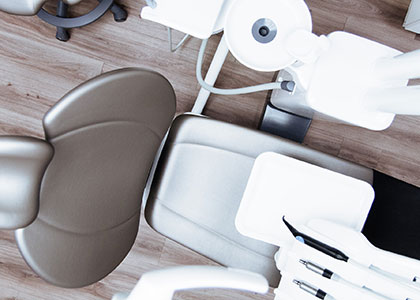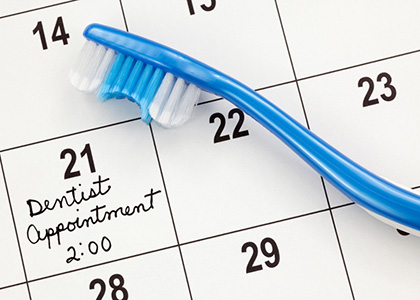Dental Jewelry: Enhance Your Smile with a Touch of Sparkle
Dental jewelry is a unique and fashionable way to make your smile even more radiant and special. In recent years, this dental decoration has gained popularity not only as an aesthetic enhancement but also as a means of self-expression. Dental jewels are small, decorative elements that are affixed to the surface of a tooth, available in various colors, shapes, and sizes. This variety ensures that everyone can find a piece that suits their taste and personality, whether it's a discreet, tiny gem or a more conspicuous, extravagant design.
Dental jewelry effortlessly enhances your appearance, instantly drawing attention to your smile. The jewels can be made from various materials, such as gold, silver, or crystal, all of which are durable and safe for oral use. Additionally, a wide range of motifs, such as stars, hearts, or flowers, can be chosen to further increase the uniqueness of your dental jewelry.
Advantages of Wearing Dental Jewelry
Uniqueness and Style: Dental jewelry allows you to express your individual style and personality. With a variety of shapes and colors available, you can find the perfect piece to match your taste and mood. Whether it's a discreet crystal or a colorful pattern, dental jewelry is a perfect accessory for any occasion, offering a stylish and unique appearance that is sure to bring a smile to everyone's face.
Painless and Quick: The application of dental jewelry is a quick and painless process that does not require any dental intervention or drilling. The application process takes just a few minutes and usually involves no discomfort. The dentist or aesthetician first cleans and dries the tooth surface, then uses a special dental adhesive to attach the jewel to the desired location. The entire process is swift and simple, making it possible to be done even during a short lunch break.
Temporary Decoration: One of the great advantages of dental jewelry is that it serves as a temporary decoration, so if you ever get tired of the jewel, you can easily remove it without leaving any marks on your tooth. The removal is also simple and painless and does not damage the enamel. This means that if you decide to change your look or simply take a break from wearing the jewelry, you can easily do so.
Safe: Dental jewels are applied with a special dental adhesive that does not damage the enamel. These materials are safe and developed to prevent irritation or injury to the teeth or gums. Moreover, the materials used for dental jewelry are usually hypoallergenic, making them suitable for those sensitive to metals or other materials. With proper hygiene, dental jewelry can be worn safely long-term without posing any health risks.
Application of Dental Jewelry
The application of dental jewelry is a straightforward and quick process typically performed by a dentist or a skilled aesthetician. The process involves a few steps and takes just a few minutes, providing immediate and spectacular results.
Preparation
The first step is preparation, where the tooth surface is thoroughly cleaned and dried. This step is crucial as a clean and dry surface ensures proper adhesion of the dental jewelry. The dentist or aesthetician removes plaque and potential food residues and then uses special tools to dry the tooth surface. This cleaning process not only improves the quality of the adhesion but also ensures that the jewelry remains securely and safely in place for the long term.
Attachment
Once the tooth surface is clean and dry, the dental jewelry is attached using a special dental adhesive. This adhesive is specifically designed for this purpose, ensuring that the jewel is securely fixed and does not damage the enamel. The dentist or aesthetician carefully places the jewel in the desired position, ensuring it is aligned correctly and looks aesthetically pleasing. Proper placement is key to ensuring the jewel looks good and does not interfere with daily activities.
Curing
After the jewel is positioned, the adhesive is cured using a light source to ensure it is securely bonded. This light source is usually a special lamp that emits blue light, quickly setting the adhesive and ensuring stable and durable placement of the jewelry. The use of the light source takes only a few seconds and is pain-free, providing a comfortable and quick solution for the patient.
Immediate Result
The entire process takes just a few minutes and provides immediate results. After the dental jewelry is applied, the patient can immediately enjoy their new, sparkling smile. There is no need for a lengthy healing process or special care, allowing the patient to return to their daily activities right away.
Aftercare for Dental Jewelry
After wearing dental jewelry, it's important to maintain proper oral hygiene to prevent potential problems and ensure long-term health of the teeth. Here are detailed guidelines on what to consider while wearing dental jewelry:
Regular Brushing: Brush your teeth at least twice a day, paying special attention to the area around the jewelry. Food particles and plaque can easily accumulate around the jewelry, so it's crucial to clean these areas thoroughly. Use a soft-bristled toothbrush to avoid damaging the enamel and gums. Using fluoride toothpaste helps strengthen the enamel and protect against decay. Additionally, consider using toothpaste designed for sensitive teeth if you are prone to sensitivity.
Use of Dental Floss: Regularly use dental floss to remove food particles and plaque around the jewelry. Dental floss helps reach areas that toothbrush bristles cannot, ensuring thorough cleaning. Be gentle with the floss to avoid damaging the gums or the jewelry. Interdental brushes can also be useful in cleaning around the jewelry.
Regular Dental Check-ups: Visit your dentist regularly for check-ups and professional cleaning. The dentist can check the condition of the jewelry as well as the health of your teeth and gums. With dental jewelry, it is especially important to have regular dental exams as the risk of tooth decay and gum disease is higher around the jewelry. Professional cleaning by a dentist removes plaque and tartar that build up on teeth, helping to prevent decay and gum inflammation.
Diet and Habits: Be mindful of consuming hard or sticky foods that can damage the jewelry or its attachment. Reduce consumption of sugary foods and drinks as they can promote plaque formation and decay. Also, consider quitting smoking, as nicotine and tar can deposit around the jewelry, causing discoloration and poor oral hygiene.
Checking Jewelry Condition: Regularly check the condition of the jewelry to ensure it is securely attached and undamaged. If any issues are observed, such as loosening or damage of the jewelry, consult a dentist immediately to avoid further damage or loss of the jewelry.
Risks of Wearing Dental Jewelry
While wearing dental jewelry is generally safe, there are potential risks that should be considered to prevent possible complications. The following sections detail the risks of wearing dental jewelry and the necessary precautions:
Damage to Tooth Surface
Damage to the tooth surface can occur if the jewelry is not properly applied or removed. Enamel damage is especially likely if the adhesive or jewelry material is of poor quality. Poor quality adhesives and jewelry materials can chemically harm the enamel, leading to long-term dental problems such as decay and other dental issues. Therefore, it is essential that dental jewelry application and removal are performed only by trained dentists or aestheticians using high-quality, dental-grade materials.
Food Residue and Plaque
Food residues and plaque can accumulate around the jewelry, increasing the risk of decay and gum diseases. The presence of jewelry can hinder thorough cleaning of the teeth, especially if oral hygiene is not adequately maintained. Accumulation of plaque not only causes aesthetic issues but can also lead to periodontal diseases, which in severe cases, may result in tooth loss. It is crucial, therefore, to maintain rigorous oral hygiene while wearing dental jewelry, paying particular attention to areas around the jewelry.
Allergic Reactions
Although rare, allergic reactions to the adhesive or the material of the jewelry can occur. Symptoms of allergic reactions may include redness, swelling, itching, or pain in the gums. These reactions are more likely if the materials used are not hypoallergenic or are of poor dental quality. Therefore, it is important to use high-quality, hypoallergenic materials and to consult a dentist if necessary to avoid allergic reactions. If allergic symptoms occur, the jewelry should be removed immediately, and medical advice should be sought.
Mechanical Injuries
Wearing dental jewelry can also lead to mechanical injuries. For example, if the jewelry becomes loose or falls off, it can be swallowed, posing a risk of choking or gastrointestinal issues. Additionally, sharp edges of the jewelry can injure the tongue, lips, or gums, especially during chewing or speaking. Therefore, it is important that the jewelry is securely attached and regularly checked for any signs of damage or loosening.
Dental Jewelry at Fehérvári Dental – Make Your Smile Stand Out!
Are you looking to enhance your smile with a unique and stylish accessory? At Fehérvári Dental, we offer professional dental jewelry application that is pain-free and safe. Visit us and choose from a variety of colors and shapes to find the jewelry that best suits you! Book an appointment today and make your smile even more dazzling! Book your appointment now!




















